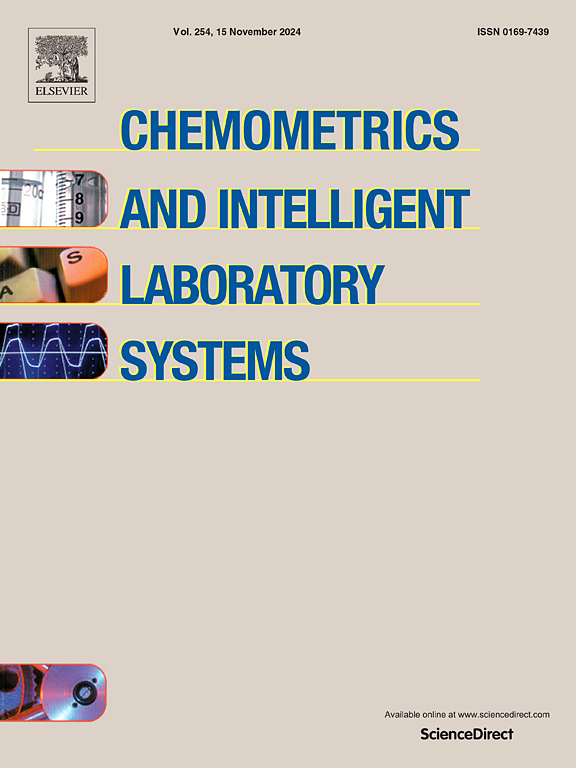多尺度迁移学习改进了可见光-近红外光谱在数据有限区域的土壤碳酸钙当量测量
IF 3.8
2区 化学
Q2 AUTOMATION & CONTROL SYSTEMS
Chemometrics and Intelligent Laboratory Systems
Pub Date : 2025-05-09
DOI:10.1016/j.chemolab.2025.105436
引用次数: 0
摘要
准确测量土壤碳酸钙当量(CCE)对农业管理和碳循环评估至关重要。虽然Vis-NIR为传统的劳动密集型化学方法提供了一种快速且无创的替代方法,但其有效性往往受到区域差异和当地数据集的稀缺性的限制,限制了其在数据稀缺地区的适用性。在这里,我们介绍了一种创新的方法,利用大规模土壤光谱数据集,并通过迁移成分分析(TCA)应用迁移学习来提高Vis-NIR模型在数据稀缺地区测量农田土壤CCE的性能。我们的基于tca的迁移模型显著优于局部构建的模型,R2为0.893,RMSE为19.569,RPD为3.17,准确率提高了64.52%。值得注意的是,所提出的迁移学习策略即使在最小的局部数据下也显示出一致的改进(当只有30个局部样本时,R2 = 0.852, RMSE = 23.077),突出了它们的鲁棒性和可扩展性。这些发现表明,迁移学习与Vis-NIR的整合为缺乏足够本地数据的地区的土壤CCE测量提供了可靠的解决方案,促进了光谱分析在土壤科学中的更广泛应用,并有助于更有效的农业实践。本文章由计算机程序翻译,如有差异,请以英文原文为准。
Multiscale transfer learning improves soil calcium carbonate equivalent measurement in data-limited regions using Vis-NIR spectroscopy
Accurate measurement of soil calcium carbonate equivalent (CCE) is essential for agricultural management and carbon cycle assessments. While Vis-NIR offers a rapid and non-invasive alternative to traditional labor-intensive chemical method, its effectiveness is often constrained by regional variability and the scarcity of local datasets, limiting its applicability in data-scarce regions. Here, we introduce an innovative methodology that leverages large-scale soil spectral datasets and applies transfer learning via transfer component analysis (TCA) to enhance Vis-NIR model performance for measuring cropland soil CCE in data-scarce regions. Our TCA-based transfer models significantly outperformed locally constructed models, achieving an R2 of 0.893, RMSE of 19.569, and RPD of 3.17, representing a 64.52 % improvement in accuracy. Remarkably, the proposed transfer learning strategies showcased consistent improvements even with minimal local data (R2 = 0.852 and RMSE = 23.077 when only 30 local samples were available), highlighting their robustness and scalability. These findings demonstrate that the integration of transfer learning with Vis-NIR offers a reliable solution for soil CCE measurement in regions lacking sufficient local data, advancing the broader application of spectral analysis in soil science and contributing to more effective agricultural practices.
求助全文
通过发布文献求助,成功后即可免费获取论文全文。
去求助
来源期刊
CiteScore
7.50
自引率
7.70%
发文量
169
审稿时长
3.4 months
期刊介绍:
Chemometrics and Intelligent Laboratory Systems publishes original research papers, short communications, reviews, tutorials and Original Software Publications reporting on development of novel statistical, mathematical, or computer techniques in Chemistry and related disciplines.
Chemometrics is the chemical discipline that uses mathematical and statistical methods to design or select optimal procedures and experiments, and to provide maximum chemical information by analysing chemical data.
The journal deals with the following topics:
1) Development of new statistical, mathematical and chemometrical methods for Chemistry and related fields (Environmental Chemistry, Biochemistry, Toxicology, System Biology, -Omics, etc.)
2) Novel applications of chemometrics to all branches of Chemistry and related fields (typical domains of interest are: process data analysis, experimental design, data mining, signal processing, supervised modelling, decision making, robust statistics, mixture analysis, multivariate calibration etc.) Routine applications of established chemometrical techniques will not be considered.
3) Development of new software that provides novel tools or truly advances the use of chemometrical methods.
4) Well characterized data sets to test performance for the new methods and software.
The journal complies with International Committee of Medical Journal Editors'' Uniform requirements for manuscripts.

 求助内容:
求助内容: 应助结果提醒方式:
应助结果提醒方式:


